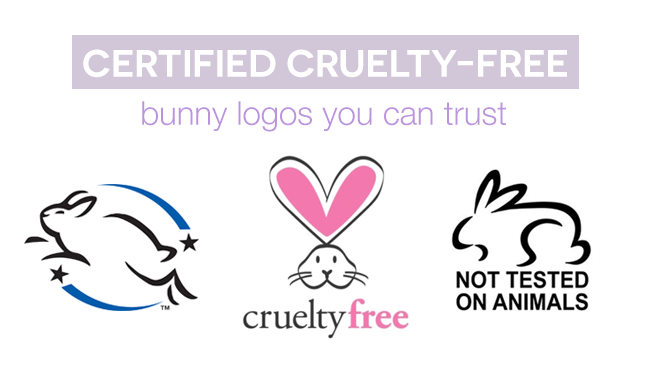In the kaleidoscopic world of cosmetics and personal care, amidst the swirling colors and enticing fragrances, lies a dark underbelly that often evades the untrained eye. The phrase “not tested on animals” adorns countless products, glimmering like a beacon of hope for the compassionate consumer. But does this phrase, often emblazoned across labels in a confident flourish, truly signify a commitment to eradicating animal cruelty? Or is it merely a clever ruse, a deceptive curtain drawn across a stage where the chorus of suffering animals is drowned out by the applause for innovation?
The landscape of cruelty-free labeling is laden with convolutions. Most consumers, driven by noble intentions, seek to support brands that align with their ethical beliefs. However, the sheer complexity of labelling practices can obscure the underlying truths. When considering the term “not tested on animals,” we must peel back the layers; we risk being ensnared by what might be referred to as “labeling loopholes.”
To illustrate, liken the cosmetic industry to an elaborate masquerade ball. On the surface, the attendees appear dazzling; they dance and twirl, adorned in shimmering gowns and tailored suits, all while whispering sweet promises of safety and compassion. However, behind their exquisite masks lies a murky reality. Some companies create their own definitions of what constitutes cruelty-free, allowing them to navigate through the shadows of ethical standards with impunity.
The most glaring example of this murkiness is the difference between “not tested on animals” and “cruelty-free.” While the former may imply that the final product and its components were not subjected to animal testing, it does not encompass all aspects of animal welfare. Companies may not test their products directly on animals but might still source ingredients from suppliers who do, thereby perpetuating a cycle of cruelty.
Moreover, some companies may resort to using alternative methods of testing, such as in vitro methods or computer simulations, to sidestep the label “tested on animals.” While these methods are often more humane, they still do not absolve manufacturers of the ethical responsibilities tied to their ingredient sourcing. Once again, the distinction is subtle yet critical, and one that an unassuming consumer might overlook
The terminology associated with testing can sufficiently muddle even the most astute purchasers. Terms like “vegan,” “hypoallergenic,” and “dermatologically tested” pepper the market, each serving its own purpose in the drama of consumer choice. Yet, these labels often come with stipulations that may not align with a wholly compassionate ethos. For instance, a product might be labeled vegan but still contain synthetic elements produced through animal exploitation. Thus, the ethical illusion persists.
To further elaborate on the metaphor of the masquerade, consider the role of certification logos that frequently grace the packaging of cruelty-free products. On closer inspection, many of these logos originate from organizations with varying criteria, leading to an expansive spectrum of what “cruelty-free” genuinely entails. Some certifications require exhaustive regulations, while others resonate with less stringent guidelines, making them little more than lip service in the pursuit of ethical beauty.
Even the animals that are fortunate enough to avoid testing in laboratories may not escape unscathed from the industry’s repercussions. The demand for raw materials can spill into the brutal territories of animal farming and habitat destruction. The conceit of a product being cruelty-free can sometimes distract us from these larger, systemic issues that perpetuate animal suffering on a grand scale.
The challenge, then, for the conscientious consumer is to navigate through the labyrinth of brand declarations and make truly enlightened choices. Transparency must be the guiding principle. By seeking brands that not only eschew animal testing but also prioritize ethical sourcing and corporate accountability, consumers can amplify their contributions to a more humane industry. Asking questions, delving into a brand’s practices, and demanding clarity can form the basis of meaningful change.
Some brands, however, have taken strides toward authenticity. Certain entities refuse to work with suppliers who engage in animal testing, adopting comprehensive policies to ensure that every aspect of their production remains in harmony with the principles of animal rights. Such dedication warrants commendation, as it signals a genuine commitment to a cause that extends beyond mere profit margins.
Additionally, advancements in technology offer promising prospects for progress in this arena. The emergence of innovative testing methods that eschew cruelty—such as organ-on-a-chip technology—holds tremendous potential to revolutionize how safety and efficacy are evaluated without sacrificing the well-being of our fellow creatures.
Ultimately, the question “Does ‘not tested on animals’ really mean cruelty-free?” serves as a catalyst for the ongoing discourse surrounding animal welfare in the cosmetic industry. As consumers become increasingly aware of the nuances of labeling—and as companies strive for greater transparency and accountability—the masquerade may begin to dissolve, revealing a more authentic picture of ethical beauty.
In essence, every purchase is a vote—a silent proclamation that reverberates through the corridors of industry. It is incumbent upon each of us to wield our purchasing power prudently, ensuring that our choices echo the values of compassion and integrity. Let us endeavor to lift the veil on a world where the glimmering promises of cruelty-free beauty align with the tangible reality of a more humane future for all living beings.








